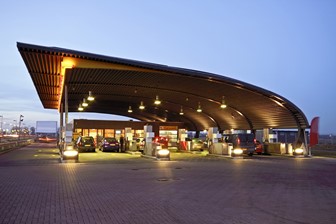The EU is still failing on fuel quality target. Boosting biofuels would make a big difference.
Even as the EU sets ambitious emissions reduction targets for 2030 and 2050, it is still falling short of an important milestone that looms much closer on the horizon: reducing the average greenhouse gas-intensity of road transport fuels.
The EU’s Fuel Quality Directive (FQD) requires Member States to reduce the GHG intensity of transport fuels by at least 6% by 2020 compared to 2010. But according to a new report published by the European Environment Agency (EEA), nearly all Member States are struggling to meet this goal. “Progress varied greatly across Member States, but almost all need to take swift action to meet the 2020 target of 6%,” the European Commission said in its corresponding Communication on the data.
The EEA report considers data submitted by Member States from 2018, the most recent year for which figures are available. The combined data show that the greenhouse gas intensity of fuels across the EU have fallen by 3.7% compared to the 2010 baseline, mostly due to the use of biofuels. While this was a slight improvement over the levels reported 2017, it is still something of a disappointment.
Finland and Sweden – which have national policies strongly favouring the use of biofuels – are the only Member States whose emission intensities decreased by more than 6%. Nearly every other country has some catching up to do. Some countries have switched to E10 petrol blend, with up to 10% renewable ethanol by volume, in order to meet their targets. Rolling out E10 across the whole EU would make an even bigger impact.
The report again demonstrates the importance of biofuels to decarbonising transport fuels, both in terms of quantity and GHG savings. In particular, the EEA reports an average EU-level GHG emissions of renewable ethanol that confirms the impressive performance of ePURE members’ ethanol in 2018 as found in our own audit: It also reinforces the importance of using more biofuels with strong GHG reduction performance and low ILUC impact such as European renewable ethanol.
The unfortunate upshot of all is this is that, despite all the rhetoric about lowering the EU’s reliance on oil, fossil fuels made up 94.8% of total fuel supply in 2018.
It’s well known that reducing road transport emissions – which make up more than 20% of EU GHG emissions – continues to pose a real challenge in the climate fight. To achieve its long-term objectives under the EU Green Deal, it needs policies that can make an immediate impact. Pushing Member States to hit their FQD targets by 2020 is a vital first step.
But the EU should also continue this emphasis on fuel quality beyond 2020 and raise the requirement for decreasing carbon-intensity. Even as electric vehicles slowly gain market share, the fact is that Europeans are still buying cars that run on petrol. The FQD remains one of the best tools the EU has to reduce their GHG emissions without having to make huge investments in new infrastructure.
The new EEA report is yet another wake-up call that the EU needs to make better use of the FQD, both now and in the future.
